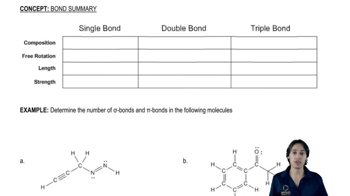Multiple Choice
Alpha-helices and beta-pleated sheets are formed by hydrogen bonds between which of the following components?
 Verified step by step guidance
Verified step by step guidance Verified video answer for a similar problem:
Verified video answer for a similar problem:



 6:00m
6:00mMaster Single bonds, double bonds, and triple bonds. with a bite sized video explanation from Johnny
Start learning